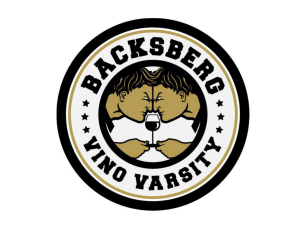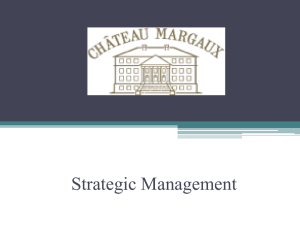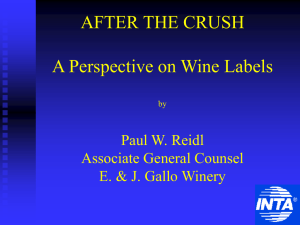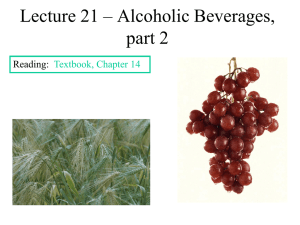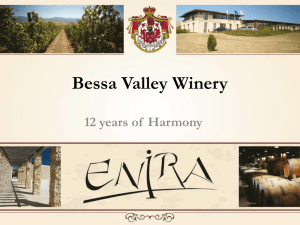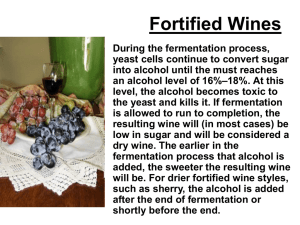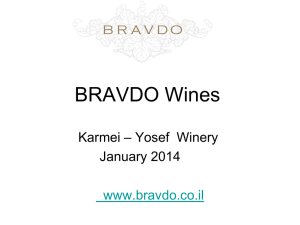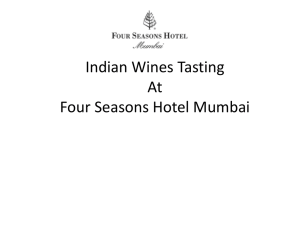WorkshopFRUIT WINES(2)
advertisement
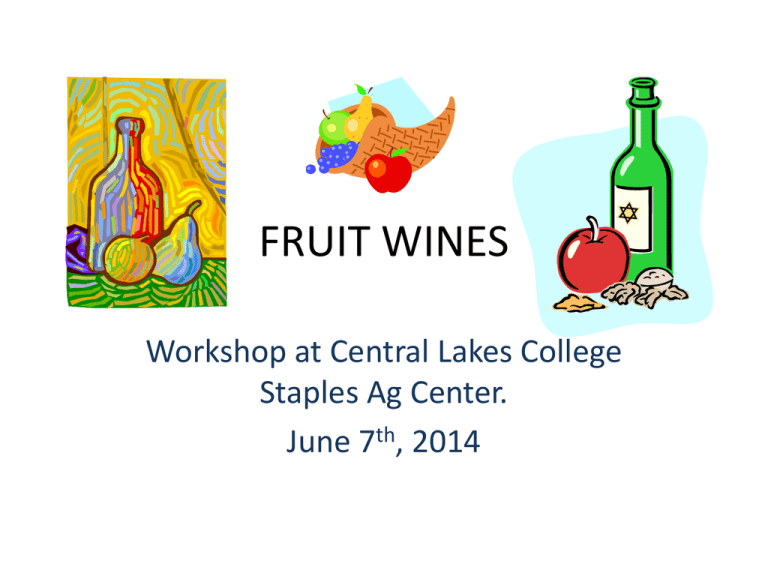
FRUIT WINES Workshop at Central Lakes College Staples Ag Center. June 7th, 2014 Farm Wineries • Farm winery licenses are issued by the commissioner of the Department of Public Safety for $50 per year. A license authorizes the on-premises sale of table, sparkling, or fortified wines. • Amounts are limited to 50,000 gallons in a calendar year. • In 2012, the legislature specified that farm wineries must be located on agricultural land or have a conditional use permit. Farm wineries in existence before May 1, 2012, are exempt from this requirement. This change was to ensure that farm wineries were on farm lands. • As a matter of definition, the law allows more than wine from grapes to be produced at a farm winery. The definition in Minnesota Statutes, section 340A.101, subdivisions 27, 29, and 30, include cider, vermouth, wine, and wine made from crops other than grapes. In addition, the law specifically allows the production of fortified wines. Farm wineries can: • sell their products on Sundays between the hours of 10 am and 12 midnight; • sell via the Internet, up to two cases per customer, as permitted in Minnesota Statutes, section 340A.417; • operate a restaurant or other establishment; • give free samples to visitors; • import, with special permits issued by the commissioner, additional grapes to add to their crops in an off-year for farm production; and • sell at a county fair with a temporary license issued by local governments. Bulk Wine • There has been a long-standing requirement that a majority of agricultural products used at a farm winery be Minnesota products (Minn. Stat. § 340A.315, subd. 4). • In 2012, the legislature adopted a provision allowing farm wineries to import bulk wine to augment their winemaking, as long as this bulk wine is not separately bottled, is less than 10% of total production, and the bulk wine counts as part of the 49% nonMinnesota grown component. Distilleries • In 2008, the legislature enacted a law that allows farm wineries to produce distilled spirits (Minn. Stat. § 340A.315, subd. 7). Under this provision, distilled spirits may comprise up to 500 of the 5,000 gallons of alcoholic beverage that a farm winery can manufacture. • Farm wineries are allowed to provide small samples of distilled spirits to customers, but must sell this new product only through existing wholesalers. • In 2011, the legislature passed a separate microdistillery licensing provision, creating a way for small distillers to operate without a farm winery license. • By law, both the Minnesota Department of Agriculture and the state’s Agricultural Utilization Research Institute (AURI) are charged with developing and diversifying Minnesota agriculture. Each organization promotes grape growing and winemaking as opportunities for farmers to diversify and capitalize on the growing popularity of wine. • The state’s tourism bureau also promotes farm winery tours and wine-tasting events as an agritourism opportunity for rural communities. The Explore Minnesota Tourism Council maintains a list of Minnesota wineries on its website, complete with the hours of operation and information on nearby fall-color driving routes. • Currently there are 51 farm wineries licensed by the Minnesota Department of Public Safety (June 2012) • That represents nearly twice as many farm wineries than there were just four years ago. 1 Grape vs Fruit wine overview • The wine grape is virtually the only fruit which commonly reaches a high enough sugar and the proper acid balance for good-flavored and stable wine. • Other fruits, including Vitis labrusca grapes and many fermentable substances such as honey, require adjustments of either sugar or acid or both to produce a satisfactory wine-like product. Often yeast foods are added to prevent fermentation problems. • The rules for adding sugar are complex, but in general the juice before fermentation may not exceed 25Brix. The alcohol content should not exceed 14 percent, unless wine spirits from the same kind of fruit have been added, and the solids content should not exceed 21 percent by weight. • Dried fruit, honey, and other fruit products have similar permitted practices, except those with high sugar content may be adjusted with water to not less than 22Brix before fermentation, in most cases. • Most fruit-type wines are marketed as fresh fruity products with as much as possible of the characteristic flavor and color of the specific fruit. • They tend to lose their fruit flavor and develop harshness or bitterness as they age or oxidize. General Production Practices • Fermentation may take place in the presence of the whole macerated fruit. Usually the pulp is pressed off and removed within two to three days to avoid alcoholic extraction of bitter or haze-producing substances. • Often heat is used to disrupt cells of fruit to aid pressing before fermentation. It is a common in processing Concord grapes. • Pectinase, pectin-splitting enzymes, are added to increase juice yield and to help clarify the juice, especially in high-pectin stone fruits such as plums. • Wine yeast are added and usually nutrients such as ammonium phosphate (DAP) and yeast extracts. • Moderately high levels of sulfur dioxide (100 to 200 ppm) are used as the juice of these fruits are highly susceptible to oxidative browning and other deterioration. • Minimal contact with air is also practiced. Molecular SO2: 0.8 ppm pH 3.0 3.1 3.2 3.3 3.4 3.5 Free SO2 13 16 21 26 32 40 50 For a wine to be stable from bacterial spoilage, Free SO2 levels need to be at higher levels as pH levels increases. Above 50 ppm Free SO2, the wines will start to have a noticeable “chemical” smell to most people. • Bentonite & Sparkaloid is used to remove proteins for clarity and heat stability. Tannin levels is usually low and the wines are not as stable to air, or as easily fined or clarified, as grape wines. • Sterile filtration or pasteurization ($) is often needed if there is residual fermentable sugar in the bottle. • Raw fruit material can be less costly, especially if suitable substandard cheaper grade B produce is available. • Multiple harvest periods (cherries in July to apples in September) help to maximize the use of wine making equipment and space out production. • Frozen fruit is often good quality, adding to the flexibility of production. • Short fermentation periods and fast completion aid in quick turnover for return on investment. • Fruit wines range from dry still table wine to light fruity, sparkling, carbonated and sweet dessert style. Examples of fruit wines: • Strawberry: dry, off-dry, dessert, iced, sparkling. • Rhubarb: Base wine, dry, off-dry. • Wild Black Cherry Wine (Chokecherry): dessert, off-dry. • Cherry: dry, off-dry, dessert. • Raspberry: dry, dessert, fortified. • Black Currant: dry, off-dry, dessert, fortified, sparkling. • Blueberry: dry, off-dry, sweet, sparkling. • Apple: dry, off-dry, dessert, iced, fortified. Fruit Wine Economics • http://www.youtube.com/watch?v=VBODWrG PMXw “How to make Ice-style apple & fruit wine” Dr. Joseph Fiola, Maryland Extension. • 5 bushels of apples/ 220 lbs. @ $0.10/lbs. • 18 gallons @ 15 Brix • Freeze to 8 gallons @ 28 Brix, about 7 gallons of “cryogenic apple wine” • Value added: 70 half bottles @ $15 = $1,050 • From $22 worth of apples. Neige Apple Ice Wine • Another Utube find, Quebec, owned by Boisset family of France. • Ice wine, frozen on the tree, yield 15% • Value $40+ per half bottle. • Cryogenic wine, frozen juice concentrated, yield 20% • Value $28 per half bottle. • Neige means “snow” in French. Apple wine experiment • To see how a yeast affect Apple wine flavor. • Scott labs yeast: 71B and • Ag Center apples (82 pounds, including approx. 30 lbs. crab*) were frozen, thawed and pressed, then SO2 • Nutrient added • Measured SO2, pH and T.A. 25 Liter Bladder press Juice Statistics • • • • • 5.5 gallons juice 13.4 Brix, pH 3.40, TA 0.41 Adjusted to 22.5 Brix with 122g/L Sugar Stir and divide into 3 buckets Add rehydrated Cotes des Blanc yeast and later Fermaid nutrient. • A: zero added Tannin • B: 50ppm FT Blanc Soft • C: 100ppm FT Blanc Soft Fermentation and finish • • • • • • • • 15 day fermentation Nutrient DAP ½ teaspoon/gallon day 5 & 7. Racked twice and add Bentonite clay. Racked and add Hot Sparkaloid. Racked and added SO2 and 1/2g/L citric acid. Bottled 12.5% alcohol and Zero residual sugar Which tastes the sweetest? Which do you prefer? Online classes

